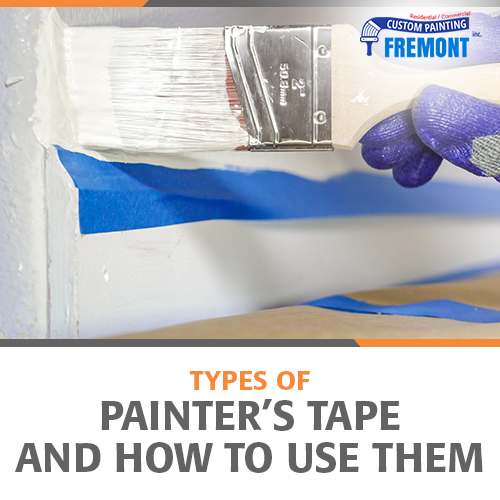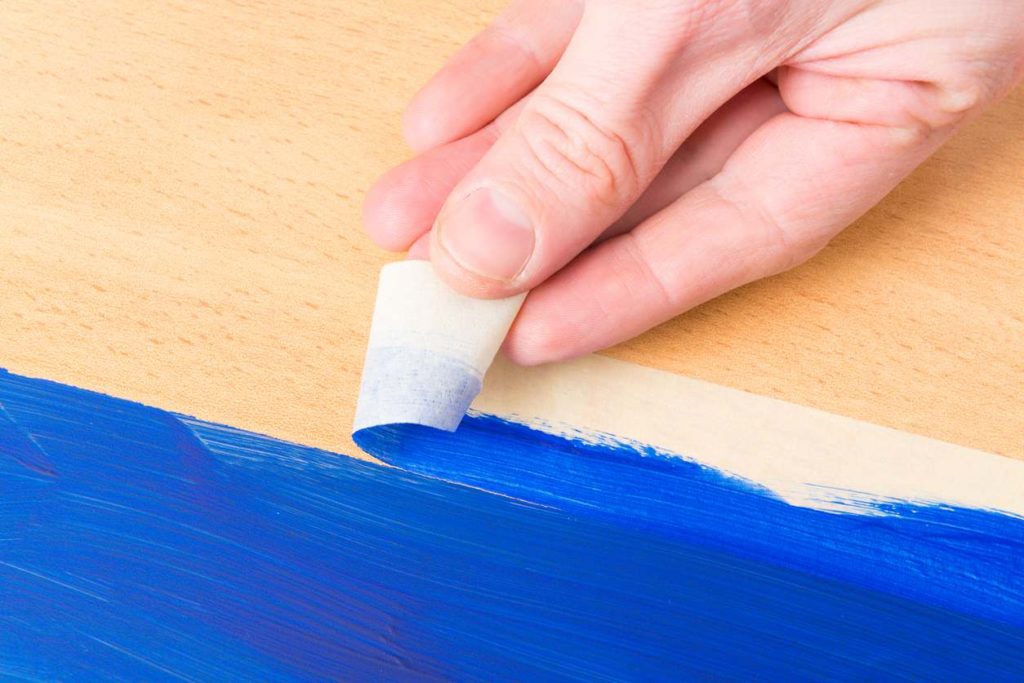Commercial painters in the Bay Area use only the right tools for the job, as they contribute to a successful paint job – even “miscellaneous” tools like painter’s tape.
Can you use masking tape instead of painter’s tape?
Whether you want to protect surfaces from paint or prepare your walls for decorating, painter’s tape is a must-have tool. You can use regular masking tape (or any other tape) for your paint job, but there are better choices than this one. While both are adhesives, painter’s tape is a specific tool made for painting.
Let’s look at the differences between painter’s tape and masking tape:
- Painter’s tape has a specifically made adhesive made for painting applications. While masking tape can also work for painting jobs, it is more suitable for general-purpose use.
- Unlike masking tape, painter’s tape is designed to work longer without leaving residues on the surface.
- Masking tape’s adhesion may be weak when applied to walls and may cause the paint to seep underneath it. You won’t find such problems with painter’s tape – it can repel water- and oil-based paints without detaching from the surface or allowing the paint to bleed through the tape.
- Painter’s tape is designed to withstand temperature changes.
- Painter’s tape offers excellent strength and adhesion power. However, it is also easy to remove.
Types of painter’s tape
Did you know there are not one or even two, but three types of painter’s tape? And they are all different because each painter’s tape is made for a specific paint project. Each of them has different levels of tackiness (stickiness), as well.
1) Blue tape (or purple painter’s tape)
Blue tape is the most common painter’s tape in the US. Also known as purple painter’s tape, it is widely considered the best tape for walls or any other sensitive surface.
The ScotchBlue Original Multi-Surface Painter’s Tape is the best-known painter’s tape. It is an excellent choice for virtually all paint projects. The tape has strong and high-quality adhesive properties that will provide clean, sharp lines without leaving residue behind. Despite its strong adhesive, the ScotchBlue is easy to remove, making it ideal for delicate surfaces. These surfaces may include wallpaper, hardwood flooring, or any surfaces with a finish.
The ScotchBlue tape has been tried, tested, and recommended. It’s a quality painter’s tape that’s also affordable.
Avoid leaving the tape on the surface for too long to achieve the best results in your paint project. Else, it could pull away some of the surfaces beneath when you try to peel it off after the paint dries. It’s best to finish your paint job for the day so that you can pull off the tape more easily.
2) Green tape
Blue and green painter’s tapes work basically the same. The only significant difference between them is each tape’s level of stickiness.
Green tape’s adhesive properties are much stronger than blue tape’s. Green tape’s high tackiness makes it ideal for protecting uneven or rough surfaces from paints. But because the green tape’s adhesive is too strong and sticky, you may not want to use it on sensitive surfaces or floors. Green tape is suitable for use indoors or outdoors.
FrogTape is the most popular green tape brand. It uses the proprietary PaintBlock technology that prevents paints from bleeding through, keeping the lines flawlessly clean and crisp. This technology works through the tape’s super-absorbent polymer, which reacts with the water in latex paints to form a gel, creating a barrier that seals the tape’s edges to stop the paint from bleeding through.
3) Yellow tape
The yellow tape has the weakest adhesive of the three painter’s tapes. One of its advantages is the bright yellow color, which can be visible even in low light.
Since its adhesive properties are significantly weaker than blue and green, the yellow tape does not stick long or may have problems adhering to the surface. The upside is that the yellow tape is the easiest to remove. You’ll never have to worry about pulling up the surface beneath.
So, what is the yellow painter’s tape good for? You can use it on outdoor surfaces like trim and paneling. These surfaces may be made from wood, metal, or vinyl; yellow painter’s tape is the ideal option.
Other important considerations for choosing the best tape for painting
Selecting a painter’s tape can be challenging, but it doesn’t have to be. The selection process should be easy as long as you know what you want for your next painting project.
Aside from the colors of the tape earlier mentioned, here are the other key considerations when choosing painter’s tape:
1) What’s your preferred adhesion level?
Adhesion is essential in painter’s tape, as you can see how well it sticks to the surface and prevents the paint from bleeding through. You can choose from low to heavy-duty adhesion:
- Low – Best painter’s tape for sensitive and delicate surfaces that use wallpaper and decorative paint.
- Medium – Best painter’s tape for various painted and unpainted surfaces.
- Heavy-duty – Best painter’s tape for exterior projects and rough surfaces like brick and masonry.
- Special-purpose – Other painter’s tape is made for special coatings like polyurethane and laminate.
2) What’s your preferred width?
The width of a painter’s tape will determine how much you want the surfaces to be protected. Think about the areas you want to protect, then choose the best one. Painter’s tape widths range in different widths:
- 0.94″ – Ideal for corners and patterned or detailed surfaces.
- 1.41″ – Ideal for door and window trim and moldings.
- 1.88″ – Ideal for door and window trim and moldings.
- 2″ to 3″ – Ideal for floors and ceilings.
Now that you know more about painter’s tapes, you can confidently start your project knowing you have the information you need to know. Are you still feeling overwhelmed? Consider hiring commercial painters in the Bay Area instead! Custom Painting, Inc. is here to help. Call us at (510)-795-0903 or message us for a free quote!




